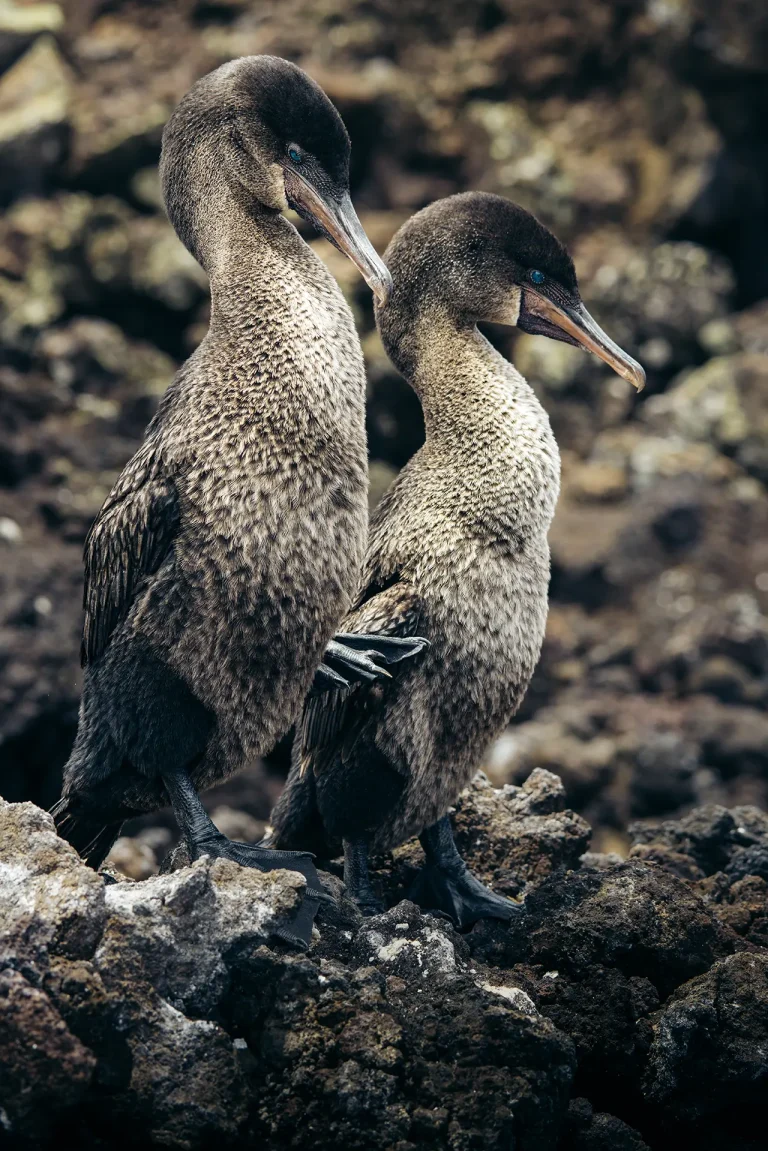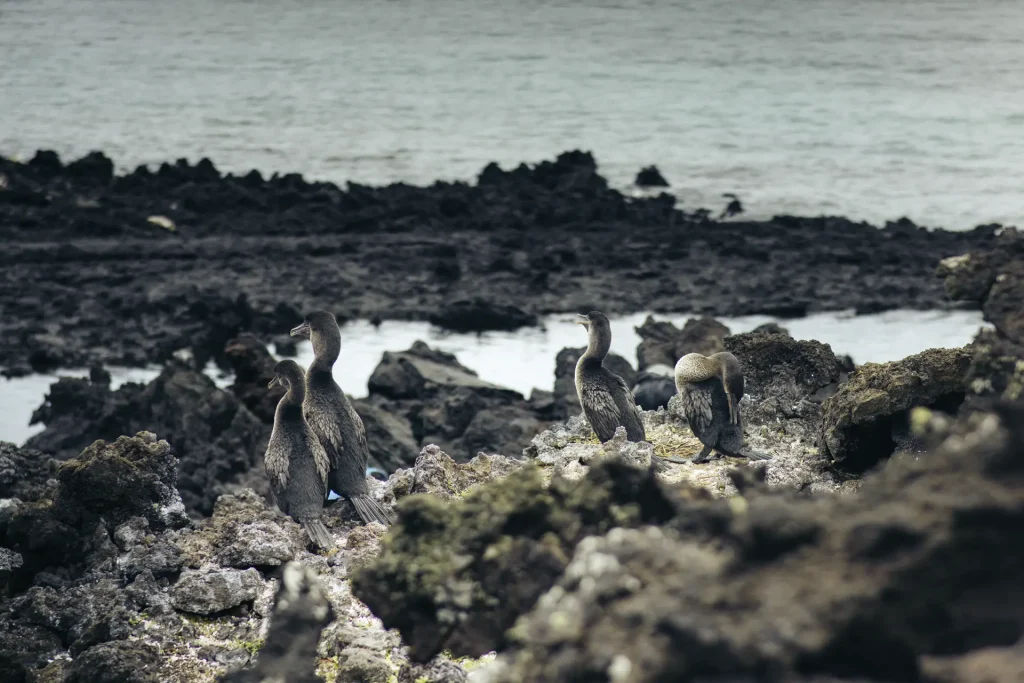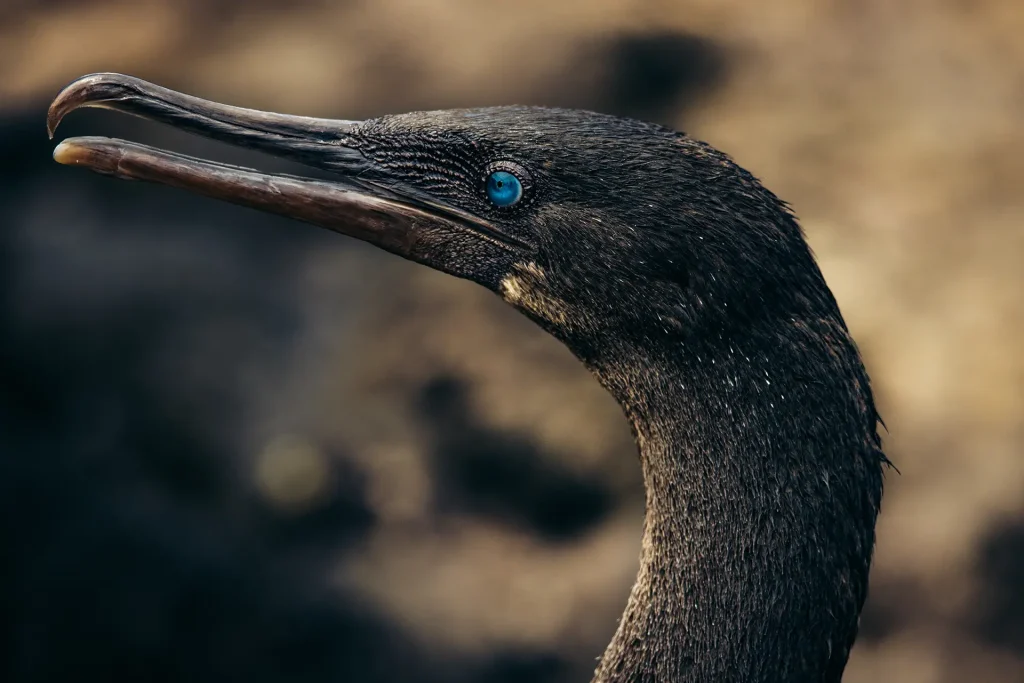Adaptation
This adaptation is due to the Galapagos Islands, where there are no predators, and the birds have plenty of food. They can thrive without being able to fly. It is a diving bird that eats mainly coastal fish, octopuses and squids. It is very active and can be seen gathering on the rocks of the seashore to dry off after a long day of hunting.

Photo: ©Galapagos Conservancy
Reproductive Dynamics and Parental Behavior
Nesting occurs in the Archipelago during the cooler months of July and October. There are plenty of marine foods available during this period. The female usually lays three to four eggs in a clutch. However, only one chick is able to survive. Both male and female parents incubate the eggs alternately and share the responsibility of feeding and caring for the chicks. When the chicks are able to take care of themselves, the female will leave to find another mate while the male takes care of the remaining chicks. Females can reproduce up to three times per year.
Conservation Status and Survival Challenges
In 2022, the Directorate of Galapagos Park estimated that there were only 2,085 flightless Cormorants. This species is vulnerable to extinction because of the potential threats posed by predators like snakes, owls hawks rats cats and sharks. Experts estimate that flightless cormorants live an average of 13 years. However, some may live longer in favorable conditions with fewer threats.
Galapagos Conservation understands the importance of protecting seabirds including the iconic Galapagos Flightless Cormorant. The presence of Galapagos flightless cormorants can be a good indicator of the health of the ocean. The study of the population dynamics provides insight into how oceans react to environmental and anthropogenic impacts. This highlights the importance of flightless Cormorants in marine ecosystem conservation.
The health of the Galapagos’ marine environment is closely linked to the flightless cormorants, despite their relatively small numbers. It is vital to protect these birds in order to maintain the balance of their habitats. Assuring their survival helps support broader conservation efforts, and sustains the incredible biodiversity of the Galapagos Archipelago. We can contribute to the health of this ecosystem by focusing on flightless cormorants.

Photo: ©Galapagos Conservancy



